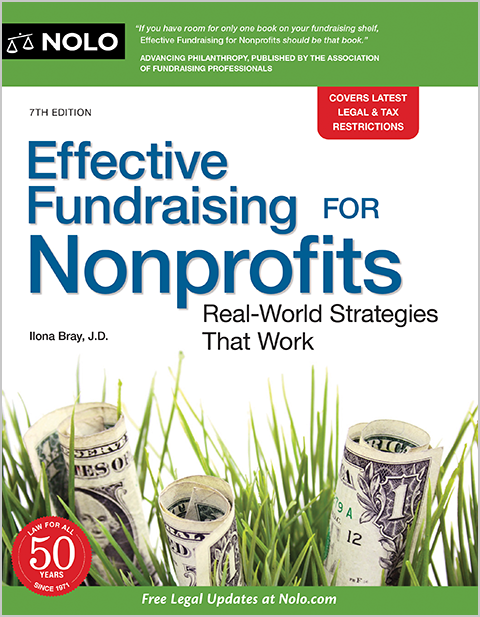Fundraising Consultant: Expert Guidance to Improve Your Nonprofit's Fundraising
Fundraising Consultant: Expert Guidance to Improve Your Nonprofit's Fundraising
Blog Article
The Function of Area Engagement in Nonprofit Fundraising: Building Lasting Relationships for Sustainable Assistance
Community interaction is increasingly identified as an important part of effective nonprofit fundraising. The approaches and methods used to engage neighborhoods vary extensively, increasing vital questions about effectiveness and impact.
Recognizing Area Involvement
Area involvement is an essential element of successful nonprofit fundraising initiatives. It refers to the methods and tasks that organizations utilize to attach with their neighborhood areas, promoting relationships that are mutually beneficial. Understanding neighborhood interaction entails identifying its complex nature, which includes partnership, outreach, and involvement. Nonprofits need to identify key stakeholders-- such as neighborhood participants, regional companies, and other organizations-- to develop effective involvement methods.
Effective area involvement is asserted on energetic listening and responsiveness to the requirements and passions of the area. This procedure involves obtaining feedback, comprehending community dynamics, and making sure that the organization's mission lines up with neighborhood top priorities. Engaging the neighborhood can take different forms, consisting of public conferences, volunteer possibilities, and partnership campaigns, each created to urge involvement and financial investment in the company's goals.
Moreover, neighborhood involvement should be come close to as an ongoing dialogue as opposed to an one-time effort. By promoting a comprehensive environment where community voices are heard and valued, nonprofits can construct a strong foundation for future fundraising ventures. Eventually, a deep understanding of neighborhood involvement equips companies to create authentic links that improve their total efficiency and sustainability.
Benefits of Strong Relationships
Strong relationships formed via area involvement yield various advantages for not-for-profit fundraising initiatives. Most importantly, these partnerships foster count on and credibility, necessary components in motivating donors to contribute. When prospective supporters see a not-for-profit proactively associated with their area, they are most likely to count on its objective and influence.
In addition, these partnerships help with reliable communication. Nonprofits can leverage their connections to share tales of effect, updates, and requires, making sure that supporters continue to be educated and engaged. This open line of interaction not only reinforces bonds yet additionally encourages referral promotion, increasing the nonprofit's reach.
Last but not least, strong neighborhood ties can bring in new companions and sponsors. Services and people are more inclined to align with organizations that show significant neighborhood participation, providing extra sources and support that can significantly boost fundraising capacities. Thus, cultivating robust partnerships through area interaction is indispensable to a not-for-profit's long-lasting fundraising success.
Methods for Effective Interaction
Just how can nonprofits effectively engage their neighborhoods to improve fundraising initiatives? Developing targeted strategies is crucial for cultivating meaningful links. Initially, leveraging social media systems allows organizations to share their objective dynamically and interactively, reaching a more comprehensive audience. Normal updates, engaging material, and calls-to-action can galvanize area interest and engagement.
2nd, organizing neighborhood events, such as workshops, volunteer opportunities, or fundraising drives, facilitates face-to-face communication, allowing nonprofits to display their effect and efforts. These events not only elevate funds however also grow connections and allow area members to involve directly with the reason.
Third, applying customized interaction methods can enhance involvement. Tailoring messages to particular benefactor sections based upon interests and past contributions cultivates a feeling of belonging and investment in the company's objective.
Lastly, producing collaborations with neighborhood businesses and neighborhood leaders can magnify outreach efforts. Collective campaigns can boost exposure and integrity, demonstrating a collective dedication to the community's health. By integrating these methods, nonprofits can construct long lasting connections that enhance fundraising efforts and drive lasting assistance.
Measuring Interaction Success
While engaging the community is critical for successful not-for-profit fundraising, determining the effectiveness of these engagement efforts is equally important. Developing clear metrics permits organizations to assess just how well they are getting in touch with their audience and achieving their fundraising objectives. Key performance signs (KPIs) such as contributor retention rates, volunteer involvement levels, and engagement on social networks platforms supply substantial information for evaluation.

Frequently evaluating these metrics allows companies to pivot their strategies when needed, making certain that neighborhood involvement stays lined up with their total goal. Additionally, sharing these results with stakeholders cultivates transparency and constructs count on, urging more neighborhood involvement. Ultimately, a online fundraising robust dimension structure not just educates future fundraising initiatives but likewise enhances the connection in between the nonprofit and its advocates, laying the groundwork for lasting success.
Situation Studies in Area Impact
Various instance researches highlight the profound effect that neighborhood engagement can have on not-for-profit fundraising success. One remarkable example is the "Something to chew on" campaign, where a neighborhood food financial institution partnered with colleges and companies to host neighborhood suppers. These occasions not just elevated funds however also fostered a feeling of belonging among individuals, dramatically raising contributor retention prices.
One more engaging case is the "Green Spaces Task," which included neighborhood citizens in the revitalization of city parks. This initiative not just amassed financial backing from local companies but additionally cultivated a volunteer base that added to continuous maintenance and programming. The feeling of ownership and pride among neighborhood participants equated right into continual payments.
In the realm of arts, the "Art for All" project successfully involved neighborhood musicians and clients to develop joint art installations, causing enhanced visibility and contributions for a local arts nonprofit.
These examples highlight that when nonprofits prioritize neighborhood participation, they can develop enduring connections that enhance fundraising efforts, making sure sustainable support and cultivating a lively area society. Such cases show that neighborhood involvement is not merely an approach but a necessary pillar of not-for-profit success.
Verdict
Finally, area involvement is indispensable to the success of nonprofit fundraising initiatives. By cultivating strong relationships with local stakeholders, companies boost depend on and reliability, leading to improved contributor retention and commitment. Implementing effective involvement methods and measuring their effect makes certain that nonprofits can adapt and prosper. Ultimately, a durable structure of community assistance not only enhances fundraising possible however additionally grows a culture of partnership, necessary for attaining long-term organizational objectives and sustaining purposeful effect.
Nonprofits should identify vital stakeholders-- such as community participants, local services, and various other companies-- to develop effective interaction methods.

In verdict, community involvement is integral to the success of nonprofit fundraising initiatives.
Report this page